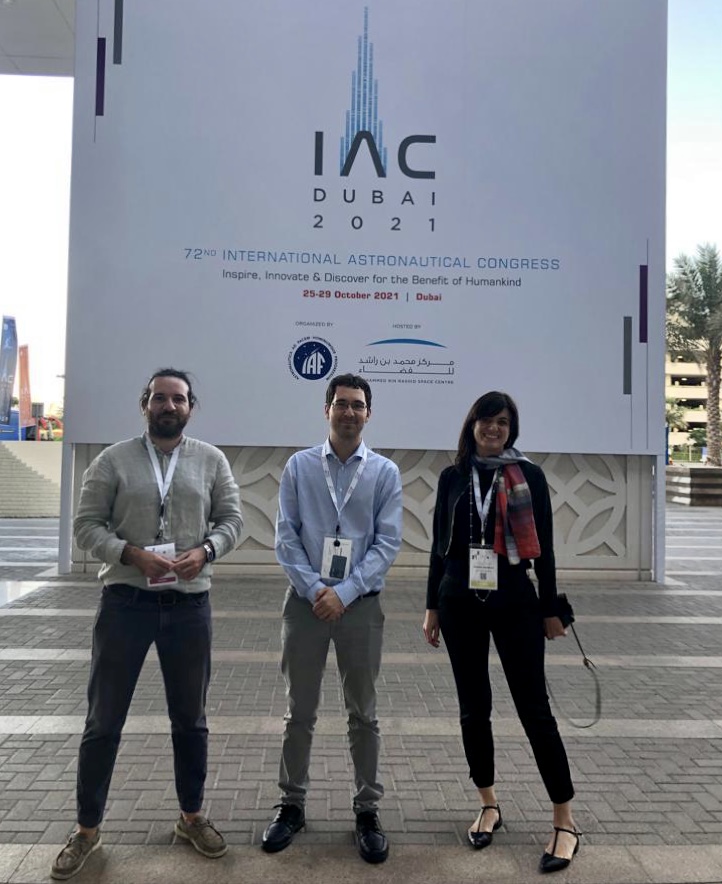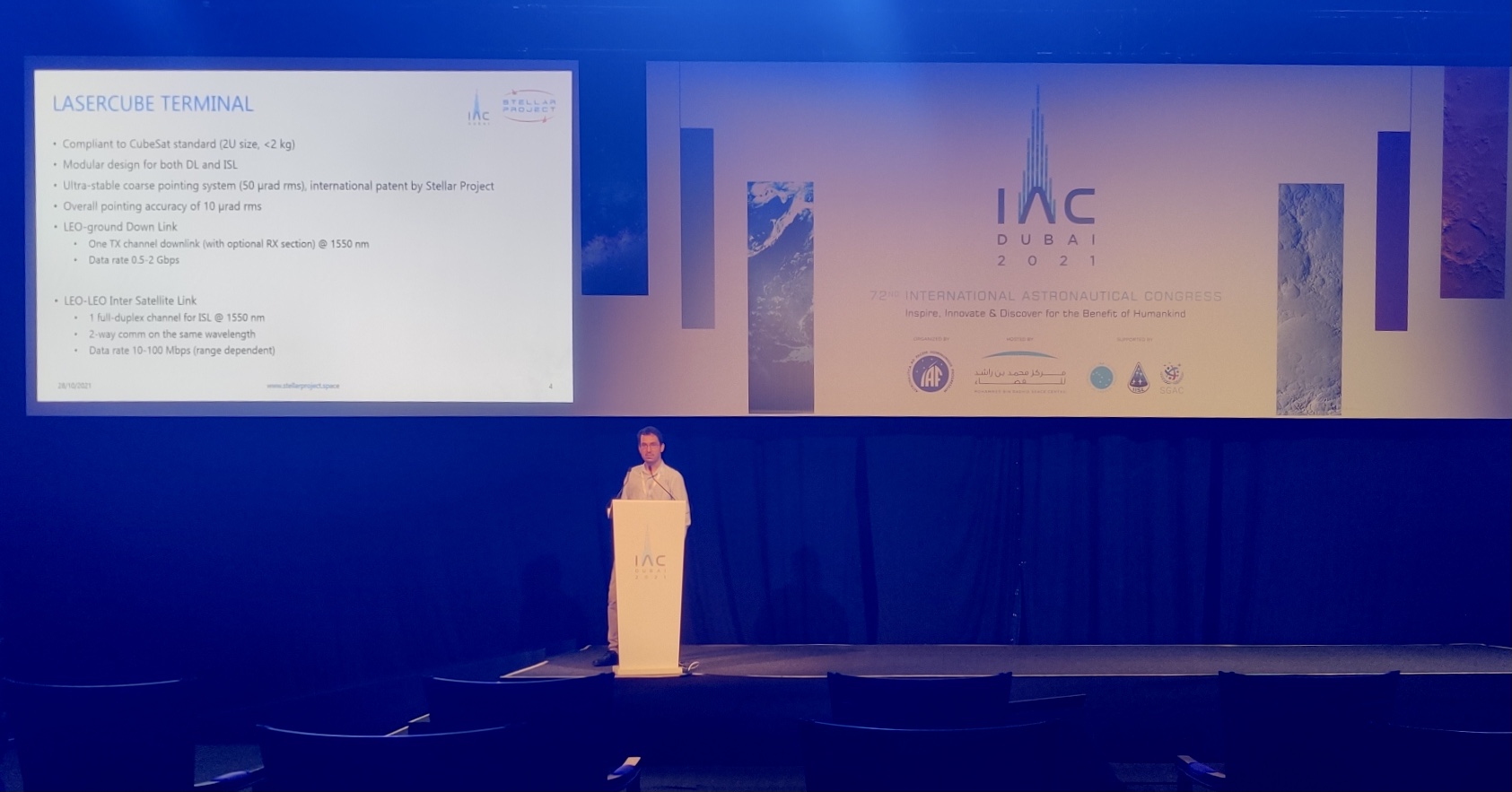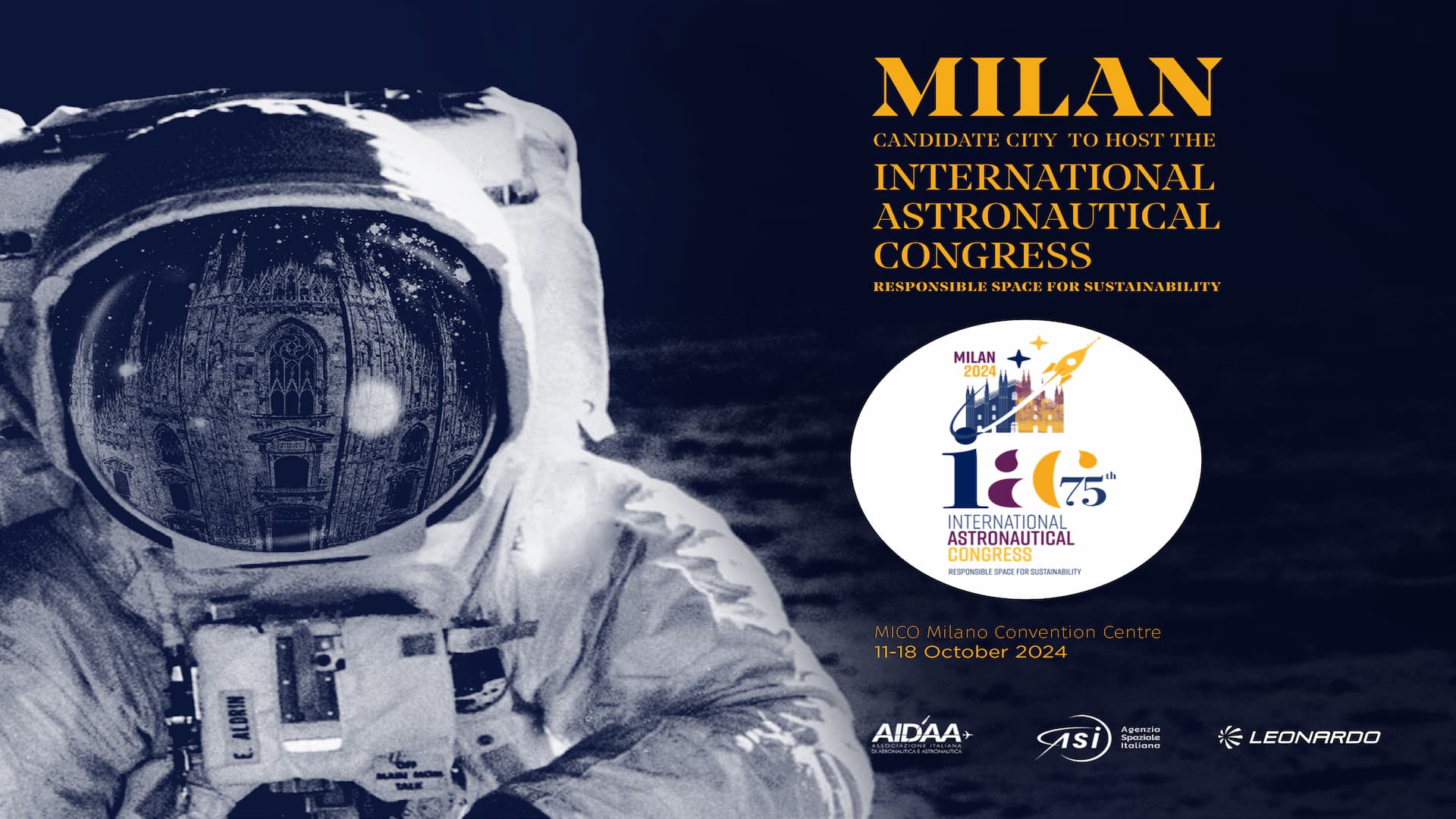
The International Astronautical Congress (IAC) is the most important international event in the space sector.
Agency heads, senior executives and high-level stakeholders of the world’s space agencies and institutions come together under one roof to exchange information and ideas, to share developments and advances, to swap insights, strategies and rising trends.

In 2021, the UAE became the first-ever Arab country to host this annual, high profile gathering of the international space industry. Dubai was the first city in the region to host the event in its seventy-year history.

Stellar Project’s team member Francesco Sansone presented our LaserCube terminal with one of the two research papers presented at the International Astronautical Congress in Dubai, October 25-29.

Stellar Project Papers Presented at IAC 2021:
Experimental verification of pointing and tracking system of optical communication terminal for small satellites
In this paper, the experimental verification of the pointing and tracking system of the proto-flight model of an optical communication terminal for small satellites is presented. The terminal, called LaserCube, fits in two CubeSat units and is conceived to operate onboard spacecraft starting from the 6U form factor, and larger.
The terminal is provided with a dual-stage pointing system, composed by a coarse pointing mechanism used to orient the optical head and a fast-steering mirror for fine pointing of receive and transmit lasers.
The coarse pointing mechanism is based on the parallel platform configuration and alone can provide 50 µrad RMS pointing accuracy when operating in conjunction with a beacon laser used for feedback.
The dual-stage control algorithm operates the two pointing stages synergically, targeting an overall pointing accuracy of 10 µrad RMS while rejecting the disturbances coming from the satellite bus.
The pointing system of the LaserCube proto-flight model has been experimentally verified in laboratory conditions that replicate real operational scenarios in space for what concerns beacon signal attenuation due to distance and the disturbances generated by the host satellite.
A dedicated setup was used to directly measure the pointing error and assess the system performance.
Main author: Dr. Francesco Sansone, Italy
If you want to learn more or get a copy of the abstract
Get in touch with us
Advantages of inter-satellite connectivity for Earth observation constellations dedicated to disaster response
In this paper, the performance of Earth observation constellations based on small satellites provided with inter-satellite link connectivity is analysed from a data communication point of view. In particular, performance is evaluated in terms of delay and throughput of the constellation, depending on several parameters such as the data rate of inter-satellite links and downlinks, the constellation parameters and the availability of ground stations.
The analysis is carried out by propagating the constellation for a given time interval of interest and defining its network structure dynamically, to calculate relevant network metrics and derive constellation performance.
Scenarios in which real-time data are specifically required have been considered, focusing on disaster response applications in which a fast action is vital, such as floods, fires and oil spills.
The results of the paper will allow defining trends and requirements for the technological development of inter-satellite telecommunications terminals suitable for constellations aiming at providing global coverage and real-time data access. At the same time, the analysis allows assessing the increase in value of information of Earth observation data offered by the implementation of inter-satellite connectivity.
Main Author: Mr Andrea Vettor
If you want to learn more or get a copy of the abstract
Get in touch with us

Congrats to the city of Milan and the supporting Committee that will host the 75th edition of the International Astronautical Congress (IAC) 2024, the most important international event in the space sector.